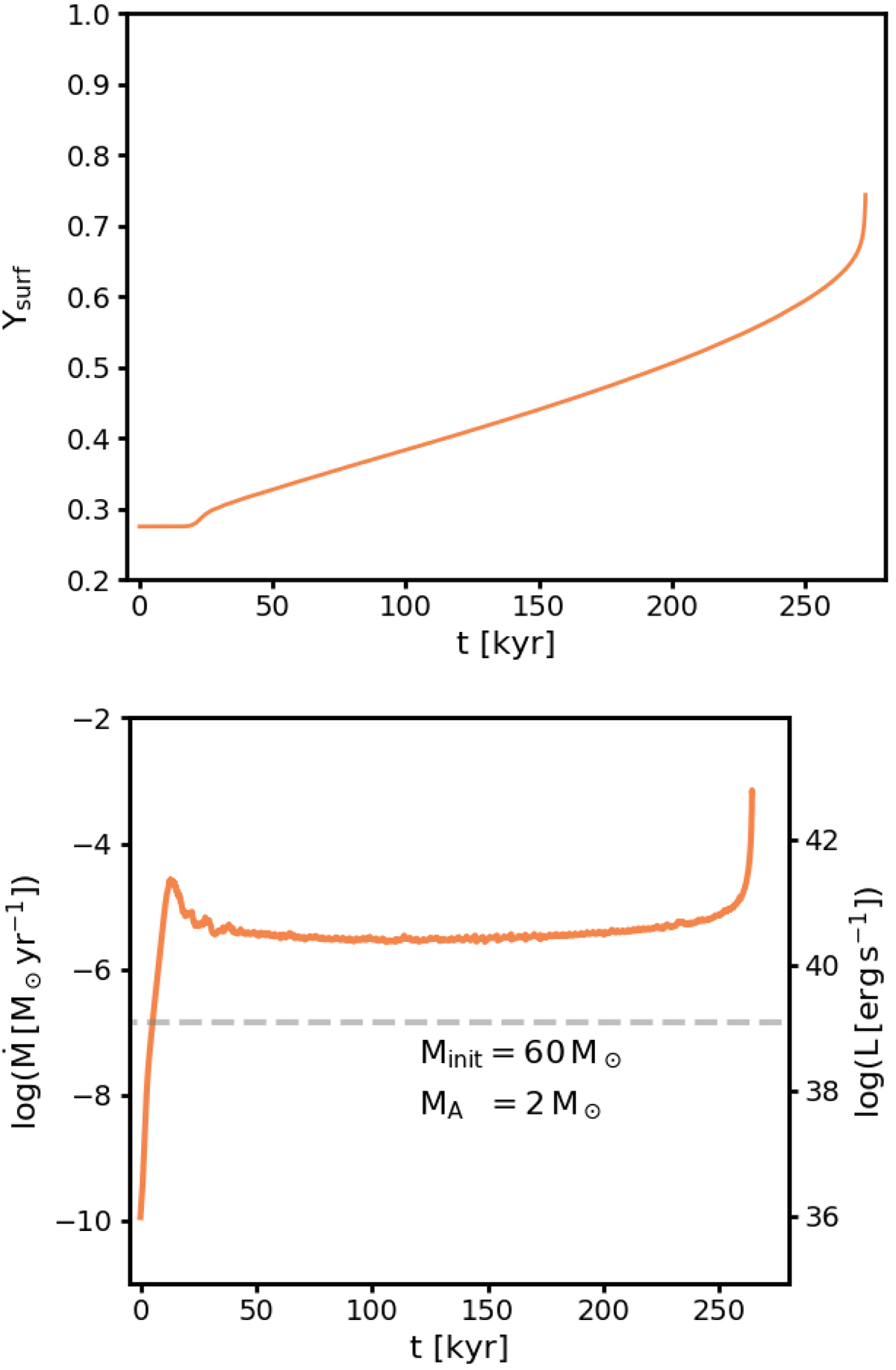Fig. 9.

Evolutionary properties of our model d2ns0, neglecting a 2 M⊙ NS companion and stellar winds. Top panel: surface helium mass fraction of the donor star as function of time during the mass-transfer phase. Bottom panel: evolution of the mass-transfer rate for the same model (left Y-axis). The right axis indicates the X-ray luminosity corresponding to the mass-transfer rate (not Eddington limited) assuming an accretion efficiency of η = 0.15. The dashed line gives the Eddington accretion limit for the NS that is applied in this calculation. Despite the high initial mass ratio of 16.8, the model settles into a stable mass transfer for about 0.25 Myr, with a mass-transfer rate of about the rate of the mass transfer on a nuclear timescale.
Current usage metrics show cumulative count of Article Views (full-text article views including HTML views, PDF and ePub downloads, according to the available data) and Abstracts Views on Vision4Press platform.
Data correspond to usage on the plateform after 2015. The current usage metrics is available 48-96 hours after online publication and is updated daily on week days.
Initial download of the metrics may take a while.


